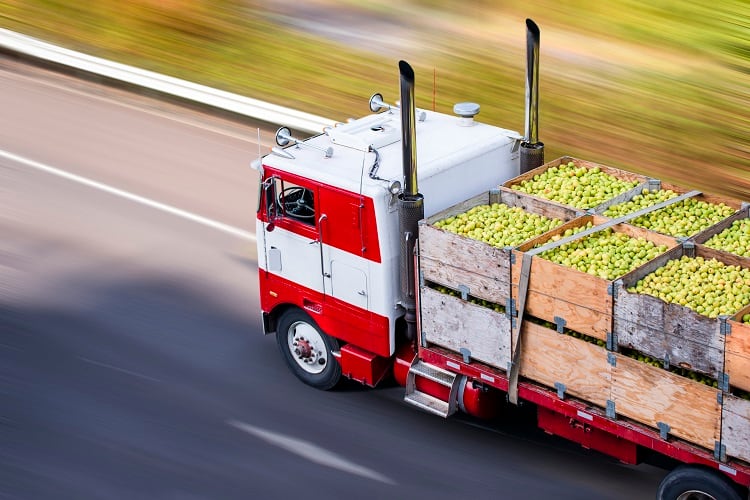To date, carbon footprint assessments of food-miles have largely been limited to specific food commodities and regions. Studies have analysed the food-mile carbon footprint of canned tomatoes in Italy, for example, and beef and wheat in the US.
A carbon footprint of the global trade of food, accounting for the entire food supply chain, however, has not yet been comprehensively quantified. Until now.
A team of researchers at the University of Sydney, Australia, has developed a framework called FoodLab to analyse 74 countries (origin and destination), 37 economic sectors (such as fruit and vegetables, and livestock), as well as international transport distances and food masses.
Findings revealed that 19% of global food system greenhouse gas (GHG) emissions are caused by transportation. This is between 3.5 and 7.5 times higher than previously estimated, and far exceeds the transport emissions of other commodities.
Fresh fruit and vegetables, which require temperature-controlled transportation, generates nearly double the number of emissions than production. Together, fruit and veg constitute over a third of food transport emissions.
Transport a ‘sizeable’ proportion of overall emissions
“Our study estimates global food systems, due to transport, production, and land use change, contribute about 30% of total human-produced GHG emissions,” said lead study author Dr Mengyu Li.
“So, food transport – at around 6% - is a sizeable proportion of overall emissions. Food transport emissions add up to nearly half of direct emissions from road vehicles.”

It has been suggested that these findings could influence the dialogue surrounding GHG emissions within the agri-food system. While the global sector is responsible for around one-quarter of total GHG emissions, animal agriculture specifically is thought to account for 14.5% of the world’s GHG emissions.
“Prior to the study, most of the attention in sustainable food research has been on the high emissions associated with animal-derived foods, compared with plants,” commented Professor David Raubenheimer, nutritional ecologist and study co-author from the University’s Charles Perkin Centre.
“Our study shows that in addition to shifting towards a plant-based diet, eating locally is ideal, especially in affluent countries.”
What to eat, where?
China, the US, India, and Russia were found to be the top food transport emitters. Yet overall, high-income countries are disproportionate contributors. ‘Food-mile emissions are driven by the affluent world’, noted the study authors.
Countries such as the US, Germany, France and Japan constitute 12.5% of the world’s population, yet generate nearly half (46%) of international transport emissions.
It is in high-income countries that eating locally grown and produced food should be a priority, suggests the research team. If the global population only ate locally, a 0.38 gigatons reduction in emissions could be achieved.
The study authors admitted this would not be realistic, as many regions cannot be self-sufficient in food supply. However, it could be implemented to varying degrees. “For example, there is considerable potential for peri-urban agriculture to nourish urban residents,” said co-author Professor Manfred Lenzen.
Richer countries can help to reduce their food transport emissions by investing in cleaner energy sources for vehicles and incentivising food businesses to use less emissions-intensive production and distribution methods such as natural refrigerants, suggest the study authors.
“Both investors and governments can help by creating environments that foster sustainable food supply,” said Prof Lenzen.

Consumers can also do their part. As supply is driven by demand, changing consumers’ attitudes and behaviour towards sustainable diets can ‘reap environmental benefits’ on the ‘grandest scale’, said nutritional ecologist Prof Raubenheimer.
“One example is the habit of consumers in affluent countries demanding unseasonable foods year-round, which needs to be transported from elsewhere.
“Eating local seasonal alternatives, as we have throughout most of the history of our species, will help provide a healthy planet for future generations.”
Source: Nature Food
‘Global food-miles account for nearly 20% of total food-systems emissions’
Published online 20 June 2022
DOI: doi.org/10.1038/s43016-022-00531-w
Authors: Mengyu Li, Manfred Lenzen, Arunima Malik, Liyuan Wei, Yutong Jin and David Raubenheimer.




